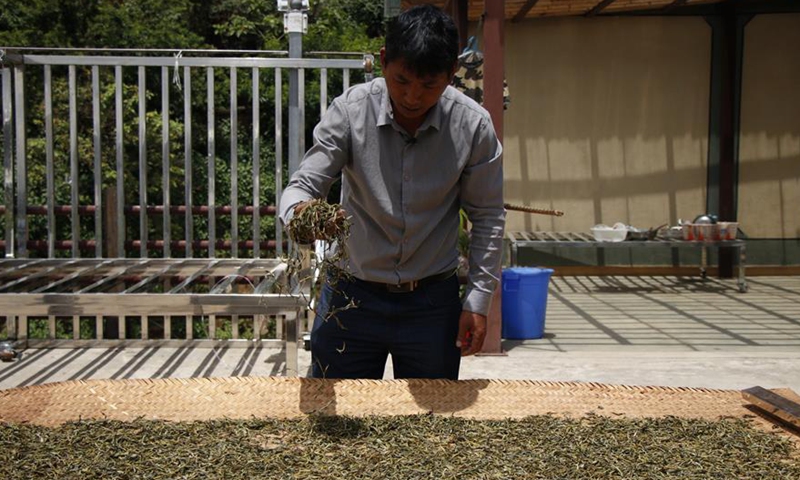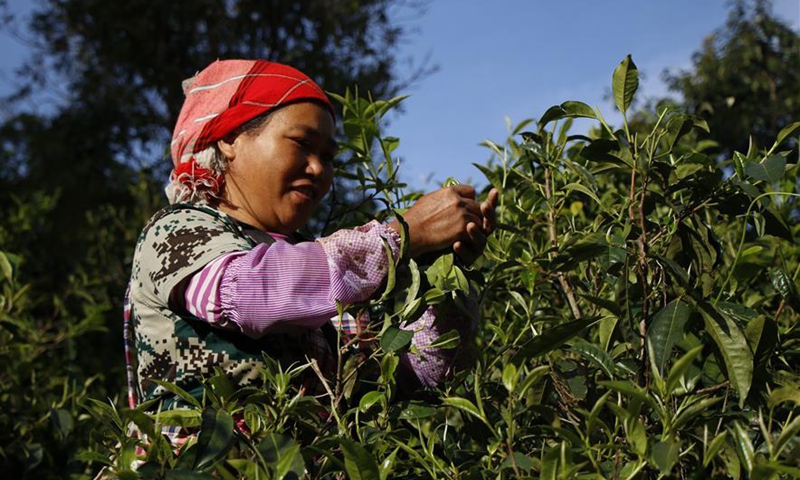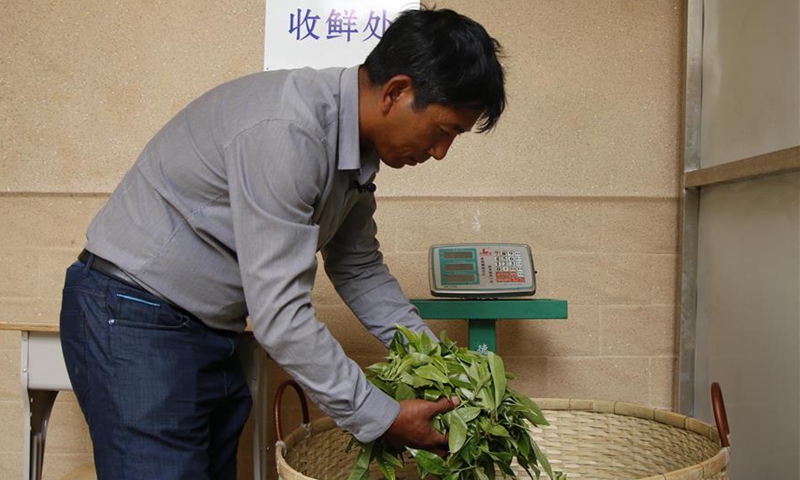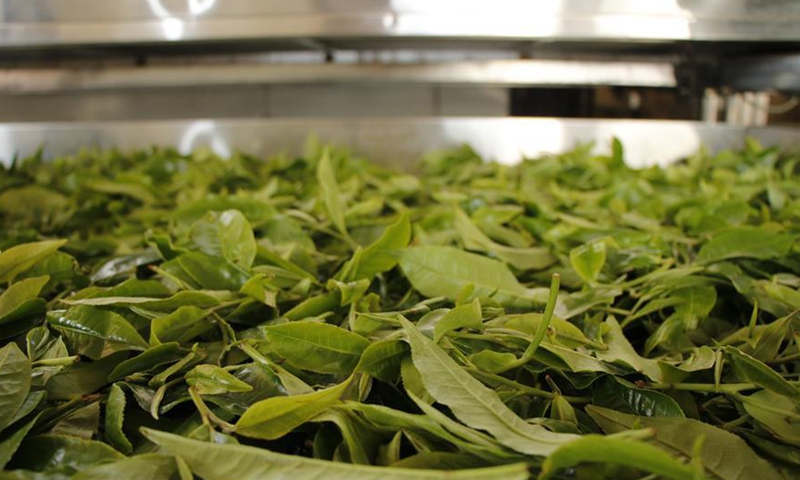
A local tea farmer dries tea leaves in Laobanzhang Village of Menghai County in Xishuangbanna Dai Autonomous Prefecture, southwest China's Yunnan Province, May 30, 2020. Menghai County is a famous Pu'er tea growing area with a long history of tea planting, making, using, drinking and trading. In Laobanzhang Village of Menghai County, some local tea farmers inherit and retain the traditional hand-made tea techniques. The hand-made tea produced by local farmers is popular in the market.Photo:Xinhua

A local tea farmer dries tea leaves in Laobanzhang Village of Menghai County in Xishuangbanna Dai Autonomous Prefecture, southwest China's Yunnan Province, May 30, 2020. Menghai County is a famous Pu'er tea growing area with a long history of tea planting, making, using, drinking and trading. In Laobanzhang Village of Menghai County, some local tea farmers inherit and retain the traditional hand-made tea techniques. The hand-made tea produced by local farmers is popular in the market. Photo:Xinhua

A local tea farmer selects tea leaves in Laobanzhang Village of Menghai County in Xishuangbanna Dai Autonomous Prefecture, southwest China's Yunnan Province, May 30, 2020. Menghai County is a famous Pu'er tea growing area with a long history of tea planting, making, using, drinking and trading. In Laobanzhang Village of Menghai County, some local tea farmers inherit and retain the traditional hand-made tea techniques. The hand-made tea produced by local farmers is popular in the market. Photo:Xinhua

Tea leaves are being dehydrated after preliminary selection in Laobanzhang Village of Menghai County in Xishuangbanna Dai Autonomous Prefecture, southwest China's Yunnan Province, May 30, 2020. Menghai County is a famous Pu'er tea growing area with a long history of tea planting, making, using, drinking and trading. In Laobanzhang Village of Menghai County, some local tea farmers inherit and retain the traditional hand-made tea techniques. The hand-made tea produced by local farmers is popular in the market.Photo:Xinhua
